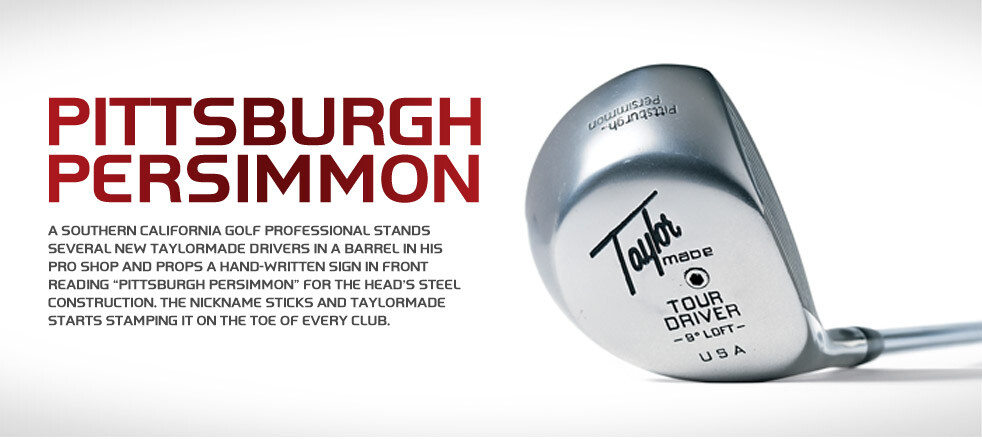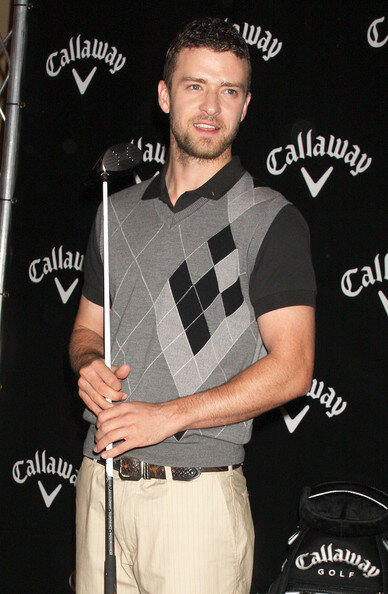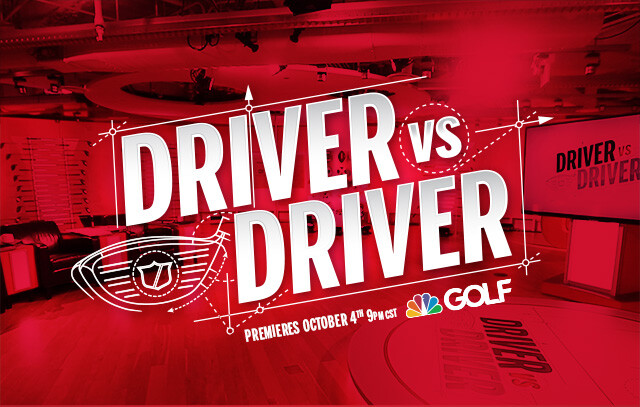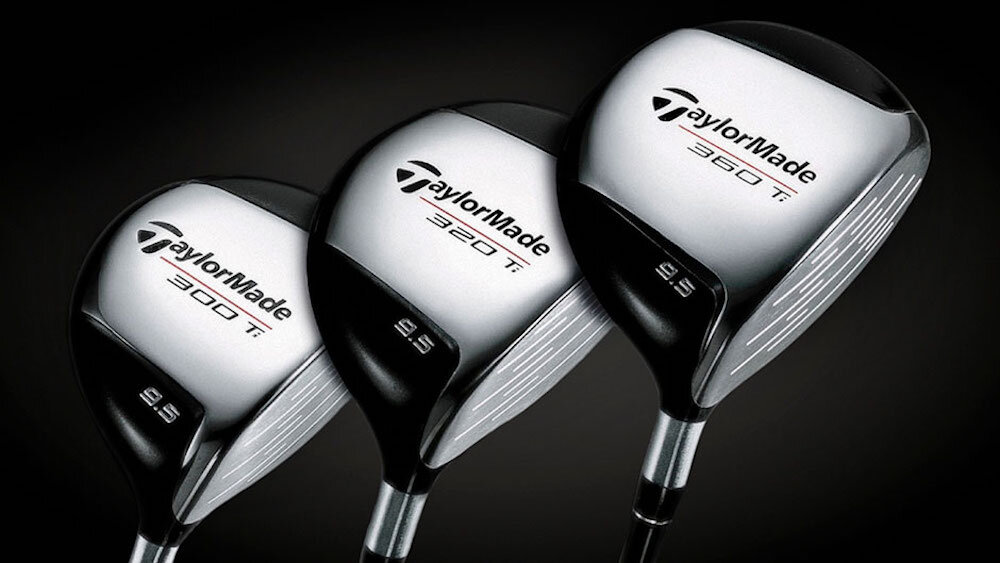![]() Let me tell you a story that illustrates the shortcomings of the typical golf industry marketing strategy…
Let me tell you a story that illustrates the shortcomings of the typical golf industry marketing strategy…
It was the last time I bought a new driver… Not a used, discounted driver, but a shiny new model from one of the biggest brands in golf. I did it for several reasons, none of which were rational:
• It had been 7 years since I purchased a new club. I was due. I deserved it.
• A client of mine in the golf industry couldn’t shut up about this club. And he gave me a deal.
• I couldn’t find any consistency — or many fairways — with my old driver.
• It was market research for this article.
It had nothing to do with distance. In fact, it had nothing to do with logic, or reason or need at all. People don’t buy clubs for logical reasons, any more than they join a country club for logical reasons. It’s purely emotional.
First we decide, then we rationalize the decision with logic and reason. Gut then head.
Which brings me to the topic at hand: Golf industry marketing strategy has always revolved around logical feature lists and frequent product launches. And every launch promises the same thing: a few more yards.
But these days, even the most wonky sales reps don’t get fired up about the frequent new product launches.
Because in golf, truly relevant product innovation is remarkably scarce. And when it does come along, it triggers a race of copycats, resulting in product parity across the board.
All the modern drivers are good. All the irons are good. And except for cosmetics, there’s no discernible difference between them. Those tiny little incremental engineering improvements are not relevant to 90% of the golfing public.

So when you’re in a category where there’s product parity, what can you do? What’s the marketing strategy when the marketing story’s not baked into the product? When everyone is equally good?
You have to shift the battlefield away from the me-too product.
Take insurance, for instance. All policies are pretty much the same, so the battlefield has shifted away from product offerings to advertising messaging.
The brand becomes more relevant than the product.
So you have interesting, true-life stories in Farmer’s Hall of Claims. “Been there, covered that.” You have mayhem man for Allstate, Flo for Progressive, the Geico Gekko and squawking ducks for Aflac. They’re all striving for differentiation in a sea of same ‘ol products. (read more on insurance industry disruption)
That’s where great advertising can really make a difference. But that’s not the case in golf.
In the golf industry, product parity has produced messaging parity. All the brands are blurring into one.
This headline from a fairly recent Cobra Driver ad sums it up: “Scientifically engineered for insanely long drives.”
Sounds insanely generic to me. You could easily replace the Cobra brand name with Taylormade, Callaway, Ping or Cleveland, and no one would know the difference. They’re ALL claiming the same thing: More Distance. Longer, longer and longer yet!
The execs at Cobra are wasting hundreds of thousands of dollars conveying a message that applies to the entire category. So essentially, they’re advertising their competitor’s products as much as they’re promoting their own. TaylorMade and Calloway ought to thank them.

In 2011 the execs at Callaway Golf recognized the need for something disruptive — something other than the next new product. They wanted to stir things up a bit, so they hired Justin Timberlake to be their “Creative Director.”
He said he was going to bring some Rock-n-roll “Kickassery” to the stodgy old golf market and appeal to a new generation of golfers.
Three ads were produced… filmed in Vegas with lots of flashy pyrotechnics starring Phil Michelson, Annika Sorrenstam and some guy named Quiros. The spots weren’t bad, but I suspect that the PR value of having Timberlake involved played better than the commercials.
The Callaway spots didn’t have a compelling story woven into them. It was all sizzle. No steak. Same old story.
Don’t you think that golfers have wised up to that promise by now? How can this month’s new driver be the longest driver ever built when last month’s driver made the same claim?
And the one before that, and the one before that. Give me a break.
In 2016 Tim Clarke, President of Wilson Golf, turned to reality TV in order to generate some kickassery for his brand. Wilson teamed up with The Golf Channel and did a Shark-Tank knock-off called “Driver vs. Driver” where ordinary folks were invited to submit ideas for a “groundbreaking new driver.”
With a $500,000 first prize it made for pretty good TV.
I have to hand it to him… Wilson’s not a major player in the golf club industry these days. (Not like they were back in the 60’s and 70’s.) Wilson drivers are simply not on the radar, and Clarke had the balls to try something completely different.
The result is the Triton driver, which is packed with every technological bell and whistle the Wilson engineers could possibly throw at it. It’s no better or worse than the top 10 drivers in the market, but there’s no doubt that many golfers who never would have thought of a Wilson Driver might at least give it a look. Or a few swings during demo days.
The show must have worked… Clarke signed-up for a second season. I’m not sure it’s going to ever product a breakthrough golf club, but it sure is a breakthrough marketing play for Wilson.

No matter what they do for R&D, Wilson and all the other golf club brands have a hard time coming up with genuinely new innovations like what Barney Adams accomplished with his Tight Lies Hybrid club in 1995.
Adams recently wrote:
“The golf equipment industry is a lot more like the fashion industry than many people are willing to admit. The actual differences between products are minor and often subjective. We don’t want to copy, but we are remiss if we don’t look at what seems to be popular and decide how to position ourselves.”
All the major brands now have hybrid clubs that are patterned after the Barney Adams original hybrid. They all have 460cc head drivers that are adjustable, patterned after the TaylorMade.
So the question is, what’s the marketing strategy in the golf equipment business when all the equipment is equal?
What do you do when there’s product parity across the board?
You throw money at it. But wait, Nike already tried that.
One of the most successful marketing organizations in the history of the world gave up on the golf equipment business. Despite having unlimited funds, the finest club design facility (The Oven) and the biggest rock star golf has ever seen (Tiger) Nike never managed to gain more than a sliver of market share (7%) against Titlest, Callaway, Ping and Taylormade.
In fact, Phil Knight recently said that they “lost money for 20 years” on golf balls and equipment.
One could argue that it was a classic, line-extension faux pas… They assumed that their success with golf shoes and golf apparel would translate directly into golf equipment.
But Nike is a shoe company. That’s the brand’s position in the mind of every golfer and no amount of money, marketing muscle, or Tiger-inspired fervor could change that perception.
Consumers could understand and embrace Nike golf shoes but not Nike golf clubs or golf balls. It just didn’t compute.
Phil Knight is famous for saying “We’re a marketing organization and the product is our best marketing tool.” But that did not translate to the golf club market. Their clubs were good, but not better. Not differentiated.
So the Nike execs decided to pull the plug and go back to what Nike’s known for…
“We’re committed to being the undisputed leader in golf footwear and apparel,” said Trevor Edwards, president of the Nike brand.
Nike’s closest competitor, Adidas, also divested itself of its golf equipment business by selling TaylorMade Golf to a private equity firm in 2017.
That was a different deal altogether. Wisely, Adidas never tried to market Adidas brand golf clubs.
In 1999 they purchased TaylorMade, the originator of the metal wood and #2 in the market.
At that time TaylorMade was owned by a ski boot company and was limping along with an ugly, bubble-shafted driver. Callaway had stolen the lead on the strength of the Big Bertha, so Adidas brought in a new management team who decided to shake things up dramatically at TaylorMade.
Their disruptive new marketing strategy was operationally-based… Faster turnaround from one product launch to the next. (If you’re going to compete in a market of me-too products, might as well turn them around faster than anyone else!)

First they launched three different drivers at the same time. Then they jumped immediately from the R300 series to the R500 series, basically doubling the speed of new product intros.
And it worked like crazy.
By the end of 2004 they had transformed TaylorMade from a $330 million second place player into a $552 million market leader (TaylorMade’s reign at the top lasted until January 2017, when they were once again overtaken by Callaway.)
Despite the company’s decade-long run at the top, it still wasn’t profitable enough for Adidas to hang onto. According to the NYPost, TaylorMade “is deep in the red, losing around $80 million a year.
Perhaps it’s because they created a monster with their ultra-rapid release cycles. (When you’re selling more discounted, out-of-date drivers than you are new drivers, your brand is going to suffer.)
Or maybe it was mass confusion… There’s no way the average consumer could decipher the difference between all those different models.
Or maybe it’s because of the messages that keep getting regurgitated with every new product release. The faster they launch, the more redundant, annoying and inauthentic the message becomes.
See, golfers have an innate sense for bullshit.
When a guy tells you that he crushed a drive 325 yards uphill, just the other day, we know he’s full of it. When a guy miraculously finds his ball, after a long search, and has a clear shot at the green, we smell a rat.
And sandbaggers… forget about it!
So, eventually, the ever-increasing volume and frequency of the same old message starts having a detrimental effect.
Not only do we stop believing, we start resenting the ridiculousness of it all. Rocketballz was deemed to be even “Rocketballzier,” and consumers were calling BS on that.
But wait, it gets worse… Even golf shoes can help us hit it farther these days. Get a load of these he-man headlines from a recent Adidas campaign for their golf shoes:
“Lock and load… 14 weapons in your bag. Two on your feet.”
“Not a shoe, a piece of artillery.”
Hoo-Ha!

The brand managers at Adidas are assuming that high tech features and a Rambo tone will sell shoes just as well as drivers. But as Spike Lee once said, “Is it the shoes? Is it the shoes? Is it the shoes?”
I think not. No one’s going to believe that shoes are equipment, on par with a new driver.
Here’s the copy from one of those shoe ads: “Three distinct power geometry zones in the outsole for maximum energy transfer during the load phase, impact and finish.”
Sounds just like a driver ad. You can tell the engineers wrote that one.
Here’s what consumers will say: “Yeah, Whatever!… They’re not too ugly. Are they comfortable? Do they have them in my size? How much?” That’s what’s relevant to Joe six pack.
The claim that “high-tech features will make you hit it farther” may have worked for drivers, but it’s just too much of a stretch for golf shoes.
Golf is a category that takes itself quite seriously, indeed. In that type of environment, humor can be a refreshingly effective way to differentiate your brand.
Titlest did it with John Cleese for the NXT Tour golf ball. FootJoy pulled if off brilliantly with their Sign Boy campaign. And Mizuno scored with a series of ads poking fun at the almost obsessive loyalty of their customers.
The Mizuno campaign is a rare example of golf advertising that was customer-focused, not product focused.
They leveraged the passion of Mizuno owners… guys who love their clubs so much they buy an extra seat on the plane rather than checking their bags. The ads were purposely, humorously, exaggerated, but they captured the authentic passion for the Mizuno brand that no competitor could claim.
Those ads would absolutely not work for any other club company. I don’t play Mizuno irons, but I aspire to. And those ads spoke to me.
With a wink and a nod, Mizuno confirmed what I already thought… that their forged irons are for smart, accomplished players who know something the rest of the golf world doesn’t know.
Sad to say, Mizuno soon dumped that campaign and started running ads generic enough to speak for any iron on the market. Another worthless, invisible message about distance. For a brand that’s known for its buttery feel and precision, it’s messaging shank.
Successful marketing strategy in the golf equipment business involves some degree of differentiation. In a perfect world, your product would be genuinely different, AND you’d say things differently.
Your story would be unique to your brand, AND the execution of the story would be more creative than anything else in the market. That’s the ultimate recipe for advertising success.
Mizuno and Adidas both have great products with a good story to tell. It shouldn’t be that hard to come up with an ad campaign that conveys the core brand benefit in a relevant manner, without resorting to the same, stupid promise of distance.
Remember the boy who cried wolf a few too many times?
That new driver I bought helped a little. For awhile. But maybe my expectations are a little different than most…
I don’t expect monumental gains in distance. I don’t need kickassery or “Epic” improvement. I’m content with a smaller dispersion pattern and a little boost of confidence.
But get this… I didn’t get that boost until I shortened that new driver by and inch and a half. Now I’m hitting if farther, AND finding a lot more fairways. But that’s a whole ‘nother story.
If you’re in the golf business and you want to build a brand that’s highly differentiated and tremendously profitable, contact me here. Or reach out on LinkedIn.
Cheers!
John Furgurson



great post! thanks for the tips and idea share. it really helps and learn the value of branding. we will come back often.
Thanks and regards,
Marife
This is a blog to watch for sure. I think you have a really awesome writing style by the way. Very easy to read. Your blog design is so clean too! Thank you all the hard work!
Johm,
Fantastic points! It’s about telling a strong, non-generic story. In the tech industry it’s worse than golf — everything is speeds and feeds, smaller, faster and lighter. That’s what makes the recent Intel ads so refreshing (Hmm, I feel a post of my own coming on). Thanks for sharing such a great perspective!
ahg3
Great post. I am facing a couple of these problems.
Thanks for the outstanding information, it really is useful.
Hello there,
WOW! about the article I must have to say just wow. How fantastically here disclaimed about Important Branding issue, What really matters a lot for a beginner. Especially the best point was the example of ‘Nike’ company. It’s really a better example to understand the matter. Oh lastly, Can You give some more information about “The Mizuno campaign” ?
Hi, I am an amateur golfer. I face a problem when playing golf. This post helps a lot. Thank you for the informative post.
Hello, I play golf. I have a problem when I play golf. Thanks for this post. I found your post informative.